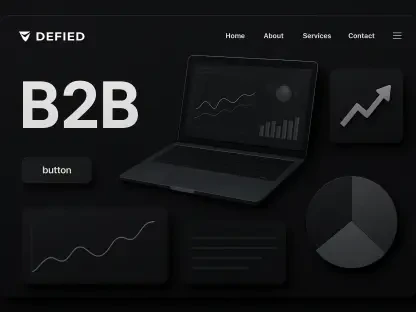As a global leader in SEO, content marketing, and data analytics, Anastasia Braitsik brings a wealth of expertise to the table. Today, we dive into Raptive’s recent decision to lower its traffic requirement by 75% to just 25,000 monthly pageviews, a move that’s shaking up the digital publishing world. In this conversation, we’ll explore the motivations behind this change, its impact on smaller publishers, the challenges of AI-driven traffic and algorithm shifts, and how Raptive is positioning itself among competitors. Anastasia offers her insights on what this means for the future of content creators and ad networks.
Can you walk us through the reasons behind Raptive’s decision to lower its minimum traffic requirement from 100,000 to 25,000 monthly pageviews?
Absolutely. Raptive’s decision to drop the threshold by 75% is really about accessibility and adapting to the current landscape. A lot of smaller publishers have been struggling to hit that 100,000 mark due to unpredictable traffic patterns, often caused by search engine algorithm changes. By lowering the bar to 25,000 pageviews, Raptive is opening the door to creators who produce high-quality, original content but haven’t yet scaled their audience. It’s also a strategic move to build a broader base of publishers early on, fostering loyalty as these sites grow.
How does this change impact publishers who were part of the Rise pilot program, and what does the transition to the Insider tier look like for them?
The Rise program was initially designed for sites with 50,000 to 100,000 pageviews, acting as a stepping stone. With the new threshold, Raptive has retired Rise and folded those publishers into the Insider tier, which now starts at 25,000 pageviews. This consolidation simplifies the structure and ensures everyone gets access to the same tools and support. For those transitioning, it’s largely seamless—they’re already in the ecosystem, so they’ll continue with the same managed monetization benefits. The challenge might be adjusting to a slightly more competitive pool, but the benefits of being in a unified tier often outweigh that.
What’s the reasoning behind Raptive’s traffic origin requirements, especially the difference in percentages for smaller versus larger sites?
Raptive’s traffic origin rules—requiring 50% of traffic from countries like the US, UK, Canada, Australia, or New Zealand for sites with 25,000 to 99,999 pageviews, and 40% for those over 100,000—are tied to advertiser preferences. These markets typically have higher ad rates and more engaged audiences, which benefits both Raptive and its publishers. The stricter 50% rule for smaller sites ensures they’re still a good fit for premium advertisers, while larger sites get a bit more flexibility since their scale often balances out geographic diversity. It’s a way to maintain quality without shutting out potential.
How is Raptive tackling the industry-wide issue of AI-driven inflated pageviews for low-quality websites?
AI-generated content and traffic inflation are huge concerns right now. Rptive is doubling down on vetting processes to ensure that only sites with original, trustworthy content make it through. They’re using a mix of manual reviews and advanced analytics to spot unnatural traffic patterns—think bots or fake engagement. It’s not just about protecting their network; it’s about maintaining advertiser trust. If low-quality sites slip through, it devalues everyone’s inventory, so Raptive is pretty rigorous about keeping standards high.
With algorithm changes causing sudden traffic drops, what steps is Raptive taking to support publishers facing this volatility?
Algorithm shifts can be brutal for publishers, wiping out months of growth overnight. Raptive is focusing on education and tools to help creators diversify their traffic sources—think social media, newsletters, and direct audience engagement—rather than relying solely on search. They’re also providing analytics to help publishers understand and adapt to these changes quickly. Beyond that, lowering the entry threshold to 25,000 pageviews is itself a buffer; it acknowledges that traffic isn’t always a straight line and gives publishers a chance to join the network even during dips.
Can you tell us more about Raptive’s updated referral program and what motivated the expansion through January 31?
The referral program is a smart way for Raptive to grow its community organically. They’re offering $1,000 for referring sites with 100,000 or more pageviews and $250 for smaller sites between 25,000 and 100,000, with this promotion running until January 31. The motivation here is twofold: it incentivizes current publishers to bring in peers, creating a stronger network, and it aligns with the lowered threshold to attract a wider range of creators. It’s a limited-time push to capitalize on the buzz around the new requirements and build momentum.
How does Raptive’s new 25,000 pageview minimum stack up against other ad networks, and what makes it stand out in this space?
Compared to other networks, Raptive’s 25,000 pageview minimum is pretty competitive. For instance, some networks have entry points as low as 10,000 sessions or even no minimum in certain programs, while others hover around 20,000 pageviews. What sets Raptive apart is the focus on quality over quantity—they’re not just letting anyone in; they still emphasize original content and proper site setup. Plus, their managed monetization approach offers hands-on support, which isn’t always the case with competitors. It’s a balance of accessibility and premium service.
Looking ahead, what’s your forecast for the future of traffic requirements and accessibility in ad networks like Raptive?
I think we’re going to see ad networks continue to adapt to the realities of traffic volatility and the growing number of smaller, niche creators. Traffic requirements might trend even lower in some cases, but with stricter quality controls to filter out noise from AI content or fleeting trends. Accessibility will be key—networks like Raptive will likely focus on building tools and communities that help publishers grow sustainably, rather than just chasing raw numbers. The emphasis will shift toward long-term value for both creators and advertisers, especially as the digital space gets more crowded.









